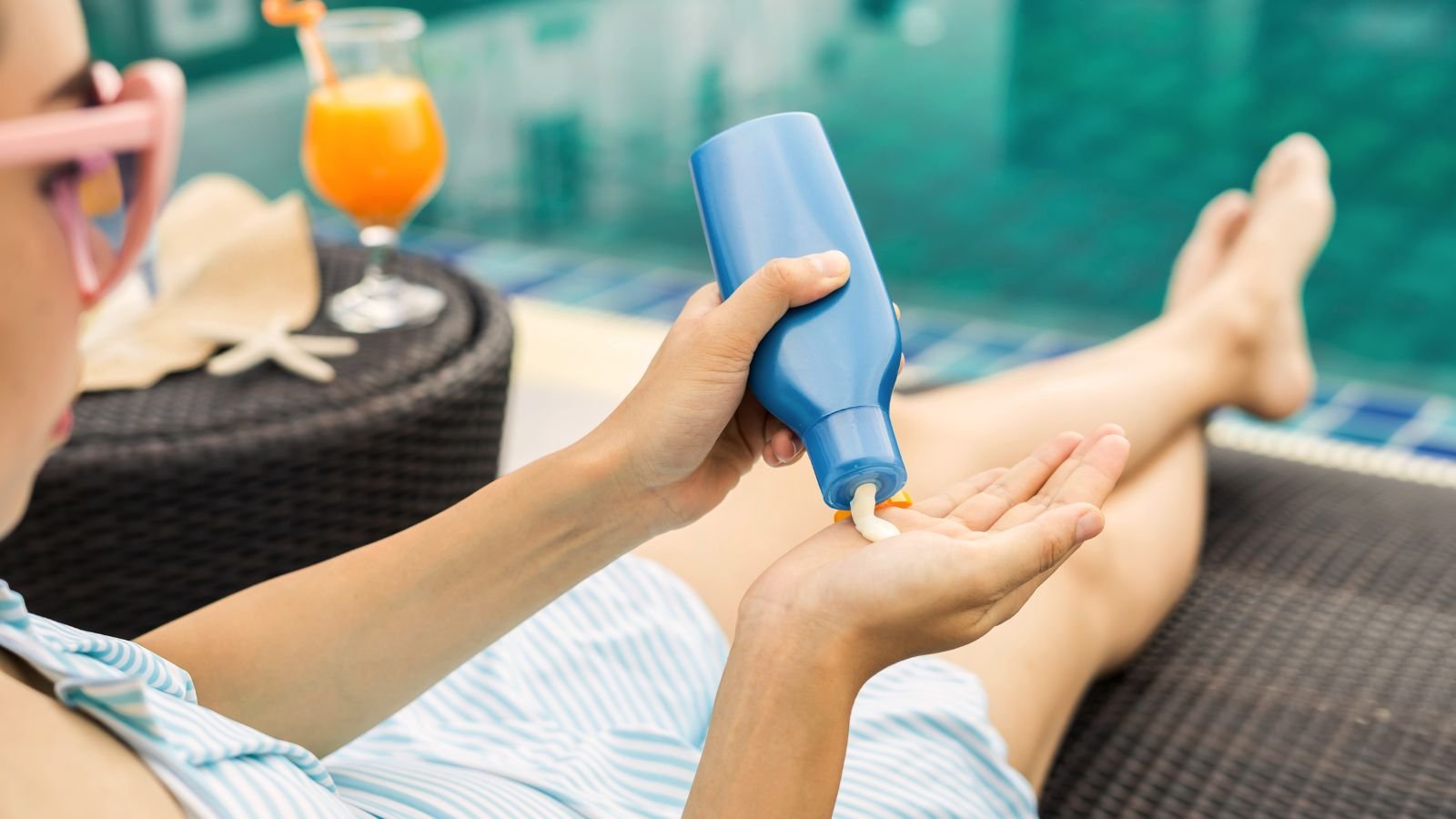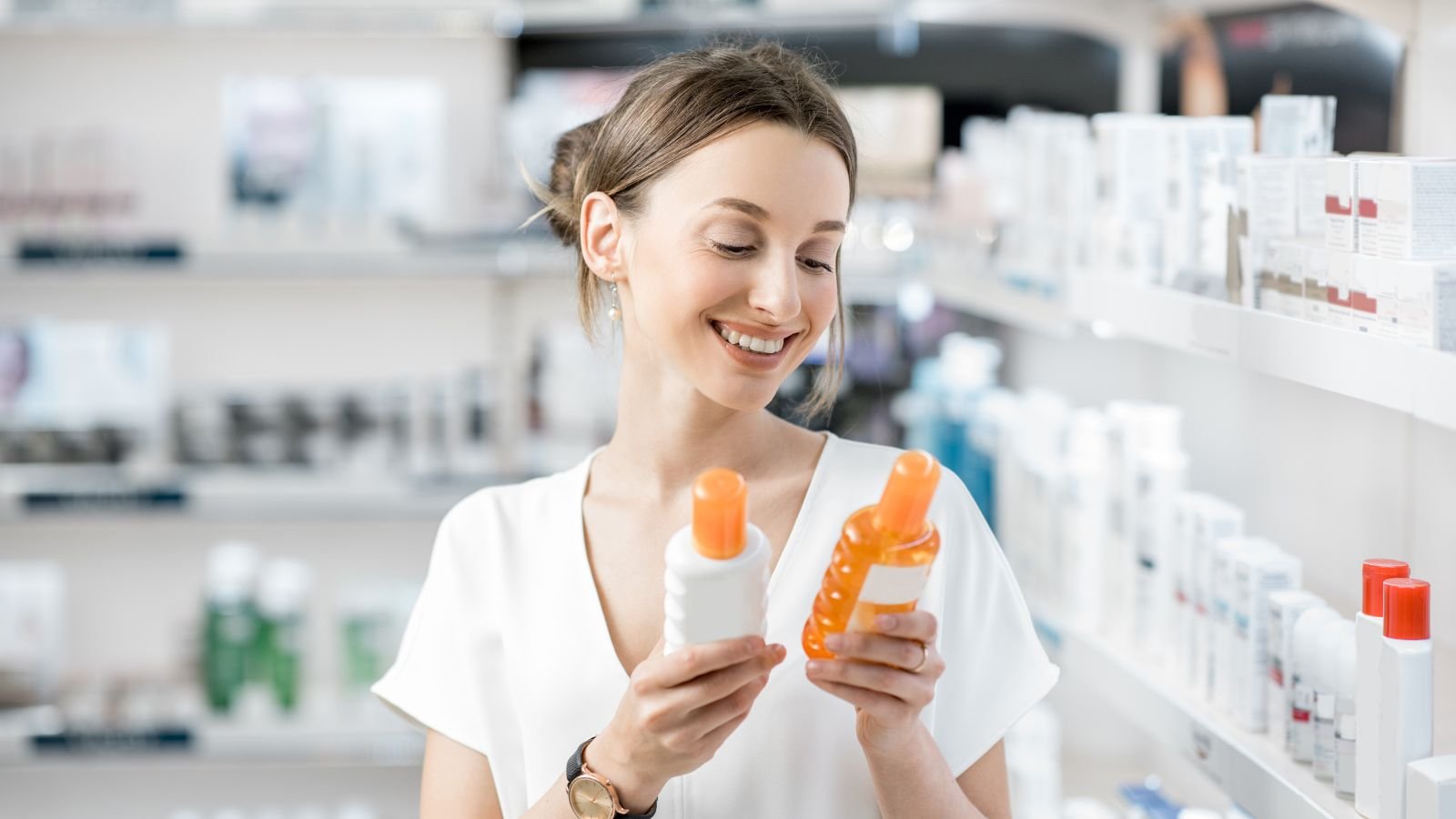With summer temperatures soaring, choosing the right sunscreen is crucial for safeguarding skin from damaging UV rays. Understanding key factors like SPF rating, and ingredient safety can help in ensuring effective protection and maintaining skin health during intense heat.
SPF Rating

Higher SPF offers greater protection against ultraviolet B radiation. UVB rays are blocked 97% by SPF 30 and 98% by SPF 50. For extended outdoor activities, choose SPF 50+. Beach days or outdoor sports demand more frequent reapplication. It is important to remember that no sunscreen provides 100% protection. Furthermore, the FDA advises using sunscreen with at least SPF 15 every day, including on overcast days. Therefore, adjust your sunscreen choice based on anticipated sun exposure duration and intensity.
Broad-Spectrum Protection

Broad-spectrum sunscreens guard against both ultraviolet A radiation (UVA) and ultraviolet B radiation (UVB). UVA rays result in sunburn, whereas UVA rays promote premature aging. Both types contribute to the risk of skin cancer. Ensure the label explicitly states “broad-spectrum” for comprehensive protection against harmful UV rays.
Type of Sunscreen

Sunscreens are available in different packings such as sticks, lotions, sprays, and gels. Lotions provide thorough coverage but can feel greasy. Sprays offer quick application but risk uneven coverage. Sticks work well for targeted areas. Gels absorb quickly and are therefore suitable for hairy areas. You need to choose the sunscreen based on your personal preference and application area.
Water Resistance

Sunscreens that are water-resistant stay effective in the water for 40 to 80 minutes. These are ideal for swimming or sweating. You should look for labels that say “water-resistant” or “very water-resistant.” However, it’s important to know that even “waterproof” sunscreens eventually wash off in water. Reapply immediately after water activities or toweling off for continued protection.
Quantity

Most adults need about 1 ounce (30 ml) of sunscreen to cover their entire body. For the face along, use a nickel-sized amount. Purchasing larger bottles proves more cost-effective for frequent use. Always have extra on hand for reapplication. To ensure adequate coverage, apply sunscreen in two thin layers rather than one thick layer.
Skin Type Compatibility
Different skin types require specific sunscreen formulations. Oily skin benefits from oil-free or gel-based products. Dry skin needs moisturizing sunscreens with hydrating ingredients. Sensitive skin often tolerates mineral sunscreen better. Acne-prone individuals should look for non-comedogenic options to prevent pore-clogging.
Application Method

Apply sunscreen generously and evenly 15-30 minutes before exposure to sun. Use enough to cover all exposed skin thoroughly. Do not forget the areas you might often miss like the ear and back of your neck. For spray sunscreens, apple until a visible sheen appears, then run in for even coverage. Consider using a sunscreen applicator tool for hard-to-reach areas like the lack to ensure complete coverage.
Reapplication Instructions

Every two hours, or more frequently if you are doing physical activities, keep reapplying sunscreen. Even water-resistant sunscreens require reapplication after water activities. Set reminders to ensure timely reapplication during extended outdoor periods. Consistent reapplication maintains proper protection throughout the day. For convenience, keep travel-sized sunscreens in easily accessible places like your car, bag, or beach tote.
Daily Use

Incorporating sunscreen into daily skincare routines is crucial for long-term skin health. UV radiation may go through windows even when they are obscured or indoors. Choose a lightweight, non-greasy formula for comfortable everyday wear. Many daily-use sunscreens are designed to work well under makeup. Daily use lowers the chance of premature aging and helps avoid sun damage.
Ingredients

Sunscreen contains either chemical or mineral active ingredients. Mineral sunscreens reflect UV rays, whereas chemical sunscreens absorb them. Common chemical ingredients include avobenzone and oxybenzone. Mineral options use zinc oxide or titanium dioxide. Some prefer mineral sunscreens for sensitive skin or environmental concerns. Recent research suggests come chemical filters may be absorbed into the bloodstream, resulting in ongoing safety studies.
Face vs. Body

Facial skin differs from body skin due to which it requires specialized sunscreens. That is why it is usually recommended to use different sunscreens for the face and body. Face sunscreens are often lighter, non-comedogenic, and formulated to work under make-up. Body sunscreens may be thicker and more water-resistant. Using appropriate products for each area ensures optional protection and skin comfort.
Expiration Date

Sunscreens lose effectiveness over time. Check expiration dates before use. Most sunscreens last up to 3 years from the manufacture date. Exposure to high temperatures can degrade the product faster. Discard any sunscreen that has changed color, consistency, or smell. Using expired sunscreen provides inadequate protection. You can write the purchase date on the bottle to track its age if the expiration date isn’t clearly marked or is not visible anymore.
Allergies and Sensitivities

Some individuals may experience allergic reactions to certain sunscreen ingredients. Scents, preservatives, and filters are common allergens. Those with sensitive skin should opt for fragrance-free, hypoallergenic formulations. Patch testing new sunscreens on a small area helps identify potential reactions before full application. If a reaction occurs, you should consult a dermatologist to identify specific allergens and find out suitable alternatives.
Brand Reputation

Choose sunscreens from reputable brands with a history of quality products. Research customer reviews and dermatologist recommendations. Well-established brands often invest in rigorous testing and formulation improvements. However, do not dismiss newer brands entirely as they may offer innovative formulations. Look for brands that provide transparency about their ingredients, testing process, and environmental impact.
Environmental Impact

Some sunscreen ingredients harm marine ecosystems, particularly coral reefs. Oxybenzone and octinoxate are common culprits. Look for “reef-safe” or “ocean-friendly” labels. Consider using mineral sunscreens or eco-friendly chemical formulations to minimize environmental impact while maintaining sun protection. Be aware that terms like “reef-safe” are not regulated. So, research specific ingredients to make informed choices.
Sunscreen and Medication

Certain medications increase sun sensitivity, requiring extra sun protection. It can be because of antibiotics, acne treatments, and some blood pressure medications. Consult a healthcare provider about potential photosensitivity from medications. Adjust sun protection strategies accordingly by using higher SPF or limiting sun exposure. Keep in mind that some herbal supplements can also increase photosensitivity.
